Hornettek Shark 2.5" SATA to USB3.0 External Enclosure Review
Today I’ve got another USB hard drive enclosure for review. I figured it might make sense to follow another one after the Gauntlet review I posted yesterday. Today I have one from Hornettek called the Shark, yes it’s an interesting name for sure for an external enclosure, but it’s not a bed product. The Shark is both metal and plastic, the outer shell is metal for protection and heat dissipation while the inner tray is plastic to help keep the weight down.
Info:
Product Name: Hornettek Shark 2.5″ SATA to USB3.0 External Enclosure
Author: Kristofer Brozio
Provider: Hornettek
Price: $26.00 (from Amazon at time of review)
Hornettek Shark USB3.0, the most compact, light weight, and super speed portable enclosure you could ever find! Just 4.6 inch (11.7CM) long, the Hornettek Shark is a perfect portable storage solution to carry in your pocket, backpack, or laptop bag. The rigid aluminum case and special air-circulation design ensure safe, quiet and cool operating environment for your HDD.
With USB3.0 Super Speed interface, Hornettek Shark provides maximum transfer speed of 5,000Mbit/s, up to 10x times faster than USB 2.0 (theoretical maximum transfer speeds). Ideal for storage and speed hungry files such as large uncompressed audio & video files.
Hornettek Shark is designed to attract you at first glance by integrating most fashion idea in a rigid aluminum enclosure, slim trimming, and hairline finishing. It is the perfect compact storage device next to your notebook or netbook.
Specs:
Model: Shark
Interface: USB 3.0, can also be connected to USB 2.0
Data Transfer: Max. 5,000 Mbit/s (USB 3.0)
HDD Support: 2.5” SATAI/II HDD and SSD
HDD Capacity: Up to 1TB
Material: Aluminum case with ABS HDD tray
Package Dimension (LxWxH): 6.9”*4.6”*2.5” (inch)
Product Weight: 0.22lbs
Units per Carton: 20
OS System Support :
Windows: USB 3.0 port, Win Vista /7 // USB2.0 port, Windows 2000 and higher
Mac: USB 2.0 port, Mac OS X v. 10.4.8 or higher
The Review::
The box for the Shark is really big for such a small product that’s inside of it.
Unpacking everything you’ll find the USB 3.0 cable, user guide and screws. The Shark needs six screws for installation.
As I mentioned in the intro, the Shark is both metal and plastic. The outer shell is a metal casing with a brushed texture. The metal should help protect the drive while keeping it cool. The plastic tray will keep things lightweight and I’m sure help further protect the drive inside.
The name Shark comes from the ventilation slits on the front, they sort of resemble shark teeth.
On the back end you’ll only find the LED indicator and the USB 3.0 connection.
The tray just slides out to reveal the SATA connection.
If you flip the tray over you can better see the screw holes for installation, two are in the PCB and two are in the tray itself.
I used the same Seagate 7200RPM 500GB hard drive with the Shark as I used with the Gauntlet. When you’ve got it powered on the LED lights up bright blue.
So let’s jump right into the testing here. I’m running the same tests as I ran on the Gauntlet, ATTO, Crystal DiskMark and SiSoft Sandra. The same comparison as well up again the Seagate Freeagent Go, Seagate Freeagent GoFlex, Siig Enclosure and the OCZ Enyo, but I’ve also added the Gauntlet.
First up is ATTO, here’s the screenshots, underneath you’ll find the scores in order of fastest to slowest.
Enyo: 142MB/s Write and 257 MB/s Read
Shark: 104MB/s Write and 105 MB/s Read
Siig: 102MB/s Write and 103 MB/s Read
Gauntlet: 101MB/s Write and 103 MB/s Read
Freeagent GoFlex: 77MB/s Write and 79 MB/s Read
Freeagent Go: 30MB/s Write and 34 MB/s Read
I wasn’t expecting the Shark to do so well, it’s much better than the Siig and the Gauntlet.
The next test is Crystal DiskMark:
CrystalDiskMark is a disk benchmark software.
Key Features
- Measure sequential reads/writes speed
- Measure random 512KB, 4KB, 4KB (Queue Depth=32) reads/writes speed
Pretty much the same results here overall.
Next would be test from SiSoft Sandra:
Physical Disks
Benchmark hard disks (i.e. the disk itself, not the file system).
As the test measures raw performance it is independent on the file system the disk uses and any volumes mounted off the disk.
Drive Score: is a composite figure representing an overall performance rating based on the highest read or write speed across the whole disk. Thus the higher the better.
Access Time: is the average time to read a random sector on the disk, analogous to latency response time. Thus the lower the better.
The Shark just barely pulls ahead of the Gauntlet to take second place, or first really in terms of mechanical hard drives.
File Systems
Benchmark mounted file systems (i.e. volumes).
This is not the raw disk performance that other benchmarks test – but the speed of the volume itself that depends on many more factors like file system, operating system cache, position on disk, etc. Thus this is the performance you get at the file system level.
Drive Score: is a composite figure representing an overall performance rating based on the average of the read, write, and seek tests, and file and cache size. It is intended to represent drive performance under typical use in a PC.
Again there’s barely any difference between the Gauntlet and the Shark and the Siig for that matter.
Removable Storage
Benchmark removable and flash devices
Combined Device Score: is a composite figure representing an overall performance rating based on the average of the Combined Score figures over the four file sizes. (Higher is better, i.e. better performance)
Endurance Factor: is a figure representing the Wear and Life Expectancy of flash devices; this is obtained by dividing the average performance (normal condition, i.e. sequential write) to the lowest performance (high-stress condition, i.e. same block re-write).
It measures the relative improvement of endurance caused by the wear leveling or flash management algorithm; the absolute endurance of a device (i.e. its expected life-time) is directly dependent, in addition to this Endurance Factor, on the nominal manufacturer rating of maximum erase/reprogram cycles, which is typically 100,000+ for SLC and 10,000+ for MLC devices. (Higher is better, i.e. longer life-time for the device)
In this test we see the Shark falls a bit behind the Siig and Gauntlet.
Overall the performance is very good I think.
One small complaint I could have about the Shark is that there are a lot of screws for installation. You need six screws in total and they only give you one extra with it in the box.
Conclusion:
The Hornettek Shark is a decent hard drive enclosure, it performs well and it’s nicely made.
The price is worth it I think at only $26.00, for that price you get a nice performing enclosure that should do a good job at protecting the hard drive inside.
| PROS | CONS |
| +Metal housing +Fairly easy installation +Decent speeds +Low price |
-Lots of screws for installation |
–
–
| Scores:: | 9 out of 10 |
| Overall: | |
| Aesthetic: | |
| Value / Price: | |
| Build Quality: | |
| Usability: |
Disclosure:This product was given to Review the Tech for review by the company for review purposes only, and is not considered by us as payment for the review, we do not, and never will, accept payment from companies to review their products. This product may have also been bought by us for review purposes and does not influence the review.

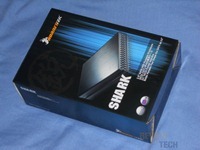
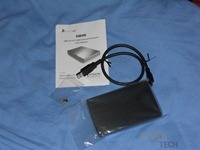
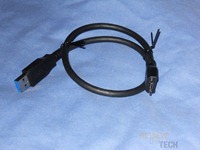


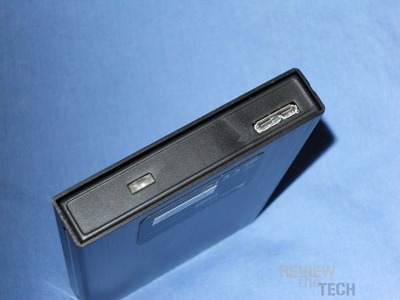














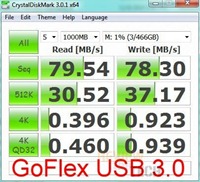
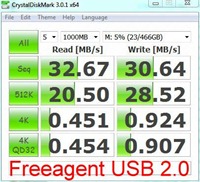




Pingback: Start the AMD Fusion — OSIM Tech News
Pingback: Hornettek Shark 2.5" SATA to USB3.0 External Enclosure @ Review the Tech - Kit Guru community
Pingback: Happy Canada Day! | MEGATechNews :: Mega Techie Goodness For the Masses